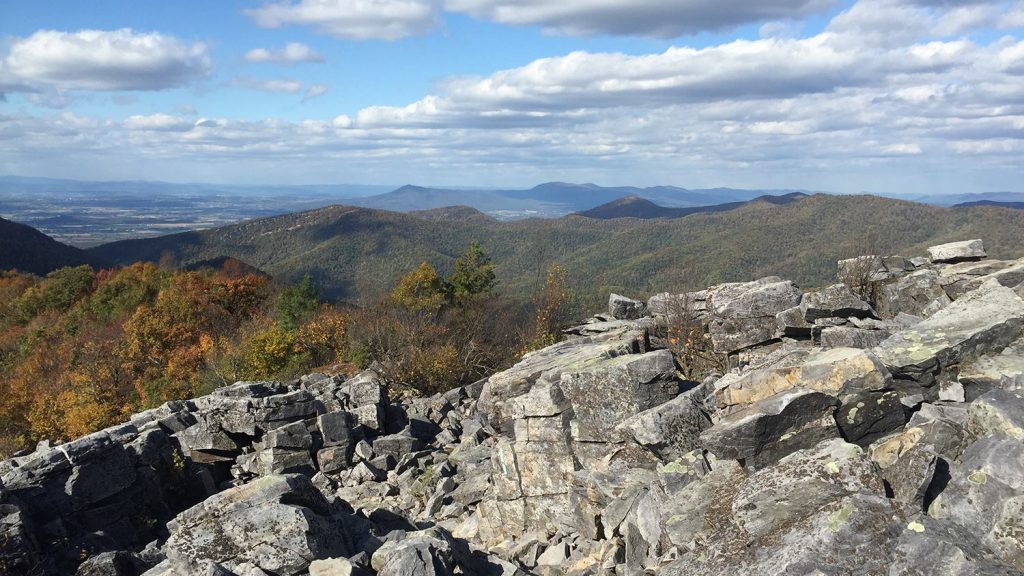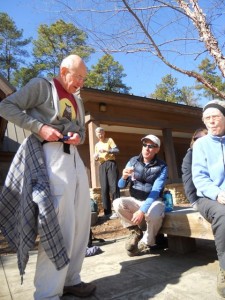News that the company that designs crash-test dummies has bulked up its replicas to better reflect a … growing America — creating a dummy that weighs 273 pounds compared to the previous 167-pounder — immediately made me think, of course, of hiking. If these crash-test dummies had been out hiking instead of parked behind the wheel, they no doubt could retain their svelte, under-35 BMI physiques of just 20 years ago.
The plight of the corpulent crash-test dummies was a reminder that we fail to appreciate that, in addition to clearing our minds, when we hit the trail it’s doing our bodies a world of good. First, as underscored by the dummies, hiking can play a key role in controlling weight. Consider: A 180-pound person burns about 500 calories an hour on a vigorous hike (throw on a 30-pound pack and that figure climbs over 650 calories per hour). Granted, we need to replace some of those calories to keep fueled, but still, that’s some serious calorie burning.
Other examples of how hiking can improve your health:
Tag Archives: health benefits
GetHiking! Charlotte and Triad
Why do I push hiking?
For one, it’s accessible. North Carolina is blessed with great hiking trails. No matter where you live, from the coast to the mountains, there are great trails a short drive away. (We even have a trail, the Mountains-to-Sea Trail, linking the coast and the mountains.)
Hiking is social. Of all the ways you can get your heart rate up, hiking is perhaps the most amenable to doing so with friends. The movement, the fresh air, the surroundings regardless of where they are, all contribute to a convivial atmosphere.
It’s soothing. For a lot of us, being in the woods is a sedative. That’s not just me talking, there’s science to back that up (see below).
It doesn’t feel like a workout. Sure, there may be times at the end of a long day where you realize your body is working, but typically that realization doesn’t occur until later on — when you try to get out of the car, for instance.
All of which is why last September GetGoingNC, with support from Great Outdoor Provision Co., launched the GetHiking! program. GetHiking! focuses on two audiences: Folks who have long been interested in hiking but, for whatever reason, have yet to take their first step into the woods. And more experienced hikers who would hike more if they knew more places to hike.
For the former, our hikes are lead from the rear, meaning you’ll never hike alone. A guide will always be at the back of the pack. For the latter, we try and hit new trails every week, ensuring that you expand your universe of hiking options.
The program launched in the Triangle in September. To date, we now have more than 500 members. Our weekly hikes can be intimate, with as few as 15 hikers, or they can be events, with upwards of 70 participants.
Based on our response in the Triangle, we are expanding GetHiking! into Winston-Salem and Charlotte, with hikes scheduled to begin in both regions later this month. You can learn more about the Triad program here, GetHiking! Charlotte here. And you can find out about our hikes and other events, and join up, by visiting the following:
Hiking: Better later than never
“Uh!” Kathy groaned about three quarters of the way up the grinding march up to Moore’s Knob at Hanging Rock State Park. “I wish I’d started doing this when I was younger.”
“Better late than never,” her sister Judy offered.
“Yeah,” I added, “and hiking is something you can do for another 40 years.”
Kathy looked at me like I was nuts. “I’ll be 60 this fall!”
OK, maybe another 20 years. The point, as sis so eloquently put it, it’s never too late to start an activity, especially when that activity is health-friendly hiking.
According to a 2005 report (the most recent year for which I could find demographic information for free), the average age of a hiker was 38 and nearly a third of the nation’s 76.7 million hikers were 45 or older. That’s about 25 million hikers — 25 million smart hikers, considering a 2009 study found that the decline in our level of fitness begins to accelerate after age 45. Because of the constant impact of hiking, it’s especially helpful for women trying to stave off osteoporosis. The additional health benefits of hiking are numerous: hiking regularly can lower your blood pressure by four to 10 points, reduce your chances for cardio vascular disease, reduce your odds of getting diabetes, help you keep weight off, lower your cholesterol and triglyceride levels and, perhaps most importantly, clear your head and help you maintain your sanity.
And it doesn’t discriminate on the basis of age.
Take Emma “Grandma” Gatewood. In 1955, at the age of 67, she hiked the entire 2,180-mile Appalachian Trail. That was the first time she hiked the AT; she did it again in 1960 at age 72, and again, when she was 75, in 1963. Lee Barry became the oldest person to thru-hike the AT when he completed the trail in 2004 at age 81. The oldest AT section hiker was 86 when he finished wrapped up the trail.
Closer to home, Triangle hikers have been trying to keep pace with Rod Broadbelt since he started his monthly hikes, mostly at Umstead State Park, in the 1990s. Rod goes anywhere from 8 miles (in the dead of summer) to 22 miles (in the briskness of February) on his hikes, which often leave much younger hikers gasping for breath. On a hike last year he said his goal was to continue leading the hikes after he turns 80. He was 78 at the time.
And lest you be an older hiker and think you don’t have the knees for hiking, we have two words of advice: hiking poles. For just as full-suspension bikes have extended the riding lives of many an older mountain biker, and the over-sized tennis racket meant more control and less darting about the court for aging tennis players, so have hiking poles made it possible for the weak-kneed to keep on hiking. Plus, with poles, not only do you still get a good cardio workout, but your upper body gets to share the toning benefits of a hike.
We can’t blame Kathy for wishing she’d started hiking sooner; think of all the great places she’s missed seeing. But then, think of all the great places she’ll visit in the next 20 years.
Or 40.


